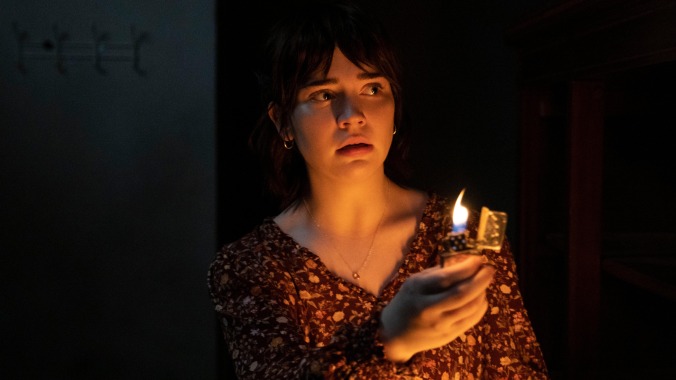The Boogeyman review: Stephen King adaptation will scare you out of your seat
The screenwriting duo behind A Quiet Place puts their own spin on The Master of Horror's 1973 short story

Stephen King’s 1973 short story The Boogeyman is not exactly a cinematic tale —it’s essentially a deranged man’s monologue to his therapist about the creature that killed his three kids—so it’s ultimately a wise choice for the film version to take extreme liberties with the term “adaptation.” This should come as no surprise to fans of King’s written work and the cinematic versions thereof, as King is a uniquely difficult author to accurately and compellingly translate to the big screen. So it’s heartening to realize that screenwriters Mark Heyman (Black Swan) and the duo of Scott Beck and Bryan Woods (A Quiet Place) aren’t even trying that angle, instead developing their own take on the “monster in the closet” thriller that plays more like a sequel to King’s work than a misguided attempt at realizing the same maladjusted character study. And the results are just as terrifying in their own right.
Therapist Will Harper (Chris Messina) is struggling to address his own grief and raise his two daughters–teenaged Sadie (Sophie Thatcher) and Sawyer (Vivien Lyra Blair)–in the wake of their mother’s tragic passing. When a disturbed man (David Dastmalchian) shows up to Will’s home office for an impromptu appointment and rambles on about a monster that killed his children, Will fails to believe him. And while Will calls the police, the man apparently commits suicide in a closet. However, as Sawyer starts to see shadows in her own closet that worm their way into the rest of her perpetually underlit house, it becomes increasingly clear that there may be some truth to the story of the so-called boogeyman.
It’s actually Sadie who serves as the film’s protagonist, which is simultaneously a blessing and a curse. On the one hand, focusing on Sadie’s inability to let go of her grief is a more interesting and active narrative angle than Will’s inability to accept his family’s crumbling reality. Yet the film also has a tendency to divide its scenes between emotional introspection and creature feature terrors, so while Sadie’s poor transition back into high school life is compelling in its own melodramatic way, there’s a sense of whiplash when she shifts into being a one-woman Scooby gang and The Boogeyman reminds you that it is, in fact, a horror movie.

 Keep scrolling for more great stories.
Keep scrolling for more great stories.